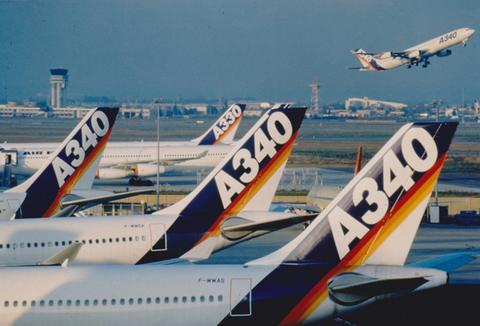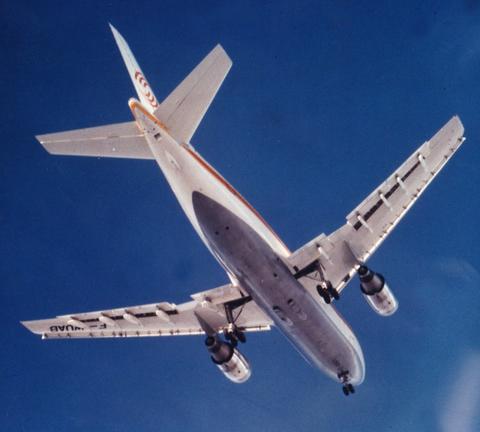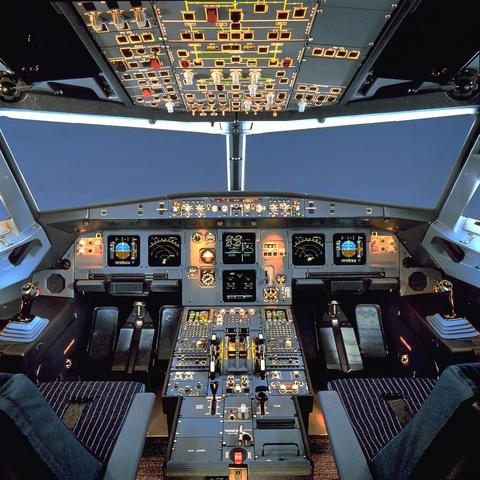As we have seen, Roger Béteille had been determined from the start that Airbus should set new standards in technology and innovation
By its very nature, the A300 had done just that by becoming the world’s first twin-engine wide-body. Other features, including the first use of composites in secondary structures on commercial aircraft and its raised cabin floor – allowing it to carry more cargo and therefore increasing its economic efficiency – had contributed to its innovative appeal to customers.
In 1977, the A300B4 became the first “ETOPS compliant” aircraft – its high performance and safety standards qualified it for Extended Twin Engine Operations over water, providing operators with more versatility in routing. With the A310, launched in July, 1978, Airbus employed its innovative skills and technological know-how to even greater effect. And, as with all future Airbus programmes, the advances made in the development of the new aircraft were fed back into the existing model, the A300.
The A310, which once again was developed in consultation with airlines, was to be a shorter, longer-range aircraft than the A300, seating 218 in a two-class configuration. It also incorporated another concept which would later become a cornerstone of Airbus’ success: both models would have maximum commonality.
Airbus introduced the use of lighter-weight carbon fibre reinforced plastic on secondary structures such as spoilers, airbrakes and rudder - first in trial on an A300 and then with the A310-200 when it entered service in 1983. Two years later, the A310-300 with its all-composite fin saw the first use of composites on primary structures, as well as the highly-effective addition of drag-reducing wing-tip devices which improved fuel efficiency.
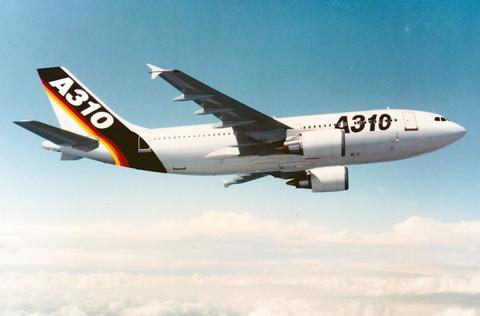
The A310 helped pioneer the use of composites in commercial jetliners.
Cockpit advances
The A310 also marked another step in Airbus’ pioneering efforts to advance the technology of cockpits and significantly enhance the man-machine interface – thereby improving operational safety. Beginning with the A300, Airbus improved the cockpit layout, allowing a two-pilot flight crew to operate the aircraft without the need for a flight engineer.
The new concept, called the Forward-Facing Crew Cockpit, went into service on an A300B4-220 delivered to Garuda Indonesia airlines in 1982, and it heralded a new era in flight decks which was to be followed by all other large aircraft manufacturers worldwide.
Airbus took the next step in cockpit development on the A310, introducing electronic flight instrument displays that replaced many of the traditional analogue dials on the main instrument panel. This A310 “glass cockpit” used six computer-driven cathode ray tube displays to provide the captain and co-pilot with centralised flight and navigation information as well as monitoring and warning data.
The glass cockpit subsequently was incorporated on the A300 as well, providing commonality between the two aircraft – an approach that was to be further developed on the other Airbus aircraft that followed.
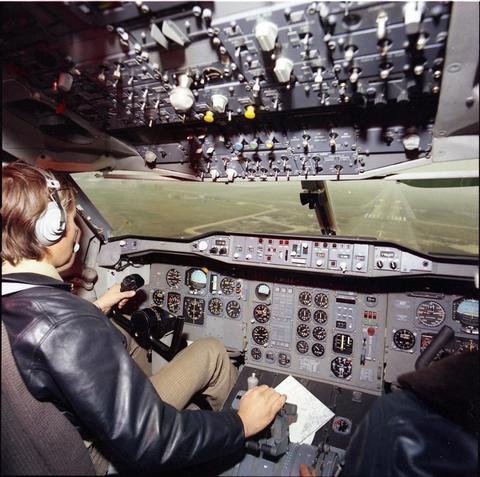
The A300’s cockpit layout allows a two-pilot flight crew to operate the aircraft without the need for a flight engineer.
The Airbus family is born
The A310 marked the beginning of the “Airbus family” development and, with its lighter weight and fuel efficiency, helped attract new customers. Jean Roeder, chief engineer of Deutsche Airbus, said: “We showed the world we were not sitting on a nine-day wonder, and that we wanted to realise a family of planes…we won over customers we wouldn’t otherwise have won. The A310 supplied us with the starting point for the A300-600 we would never have had without it….What the A310 gave us was new systems technology, the efficiency and the productivity of the ‘glass cockpit’...now we had two planes that had a great deal in common as far as systems and cockpits were concerned.”
The A310 also marked Britain’s return to Airbus as a full partner. A new, smaller wing than that produced for the A300 had to be designed. Hawker Siddeley had by now been incorporated into British Aerospace, and as the British dragged their feet about commitment to the project there was talk of the A310 wing being produced elsewhere. Eventually the British government put up a reported £50 million in a repayable loan towards development costs and from January, 1979, British Aerospace took a 20 per cent stake in Airbus Industrie, roughly equivalent to the work it would gain from being part of the consortium. France and Germany’s shares went down to 37.9 per cent each, with the rest held by CASA of Spain.
An order from Sir Freddie Laker for 10 A300s in late 1978 – the first British order for Airbus aircraft – had satisfied one of the conditions of British money for the A310, that there was a British order for Airbus.
A further oil crisis in 1979 had, like the first six years earlier, focused airlines’ attention even more keenly on economy, especially fuel consumption. Demand was growing for a new short- to medium-range 150-seater aircraft which could be used to match capacity to demand more flexibly. Airbus announced its intention to build its first single-aisle, the A320.
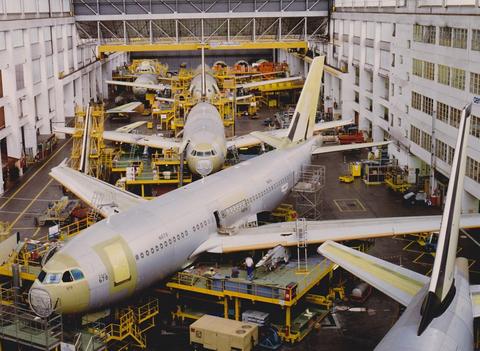
Airbus' initial final assembly line was established in Toulouse, France for the A300/A310.
Betting on Airbus
But the big breakthrough was still to come. And here the courage and flair shown by the earlier A300 tour of America paid off again. Lathière persuaded Frank Borman of Eastern Airlines to take four A300s “on lease” for six months and then decide whether to buy. If he decided against buying, Airbus would simply take them back.
It was a brave gamble, and one which was to succeed. After trying out the A300s and finding they were even more economical and efficient than he had expected, Borman ordered 23 A300B4s with nine options in March, 1978. It was the first contract Airbus had signed with a U.S. customer.
After the Eastern Airlines success, there followed a series of orders which confirmed Airbus as a serious contender in the world aircraft manufacturing industry. By the end of the decade, Airbus was able to state that it had it had delivered 81 A300s to 14 airlines, serving 100 different cities in 43 countries. Its order book was healthy: 133 firm orders and 88 options. Just 10 years after its official launch, Airbus Industrie had achieved 26 per cent market share in dollar value.
Throughout the sales drought of 1976-77 Béteille had not only been convinced, rightly, that Airbus would pull through – he had also nurtured plans to build the second aircraft in his dreamt-of Airbus family, to become the A310.
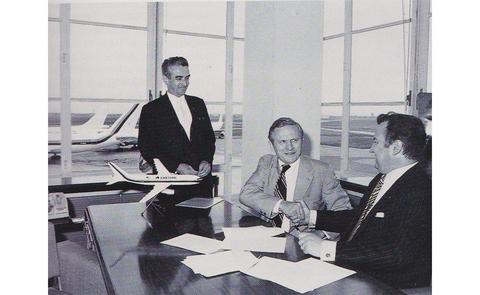
Eastern Airlines ordered A300 aircraft with a milestone agreement in 1977.

